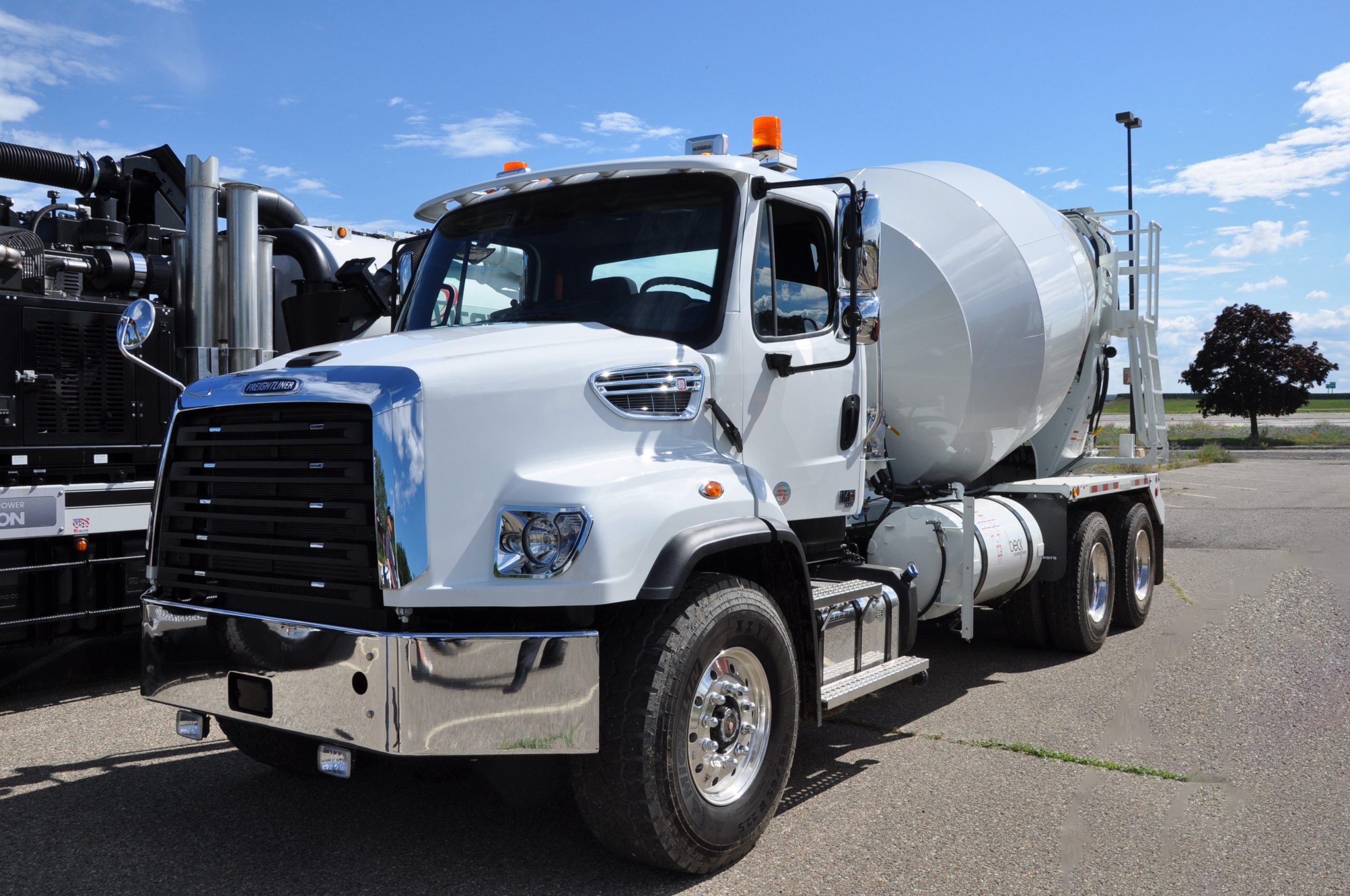The U.S. Environmental Protection Agency claims avoidance of 1 billion tons of greenhouse gas emissions and $13 billion in net society benefits attributable to GHG Emissions Standards for Heavy-Duty Vehicles – Phase 3. If upheld after near-certain legal challenges, new thresholds in the final rule, measured against Phase 2 targets, will equate to CO2 emissions reduction levels of a) 8-40 percent for 2028-2032 model year day cabs typical of tractor specs for bulk cement tanker and construction material or product trailers; and, b) 13-30 percent for heavy-duty vocational models suiting concrete mixers and aggregate dumps. When Phase 3 standards are fully phased in, EPA estimates that a purchaser of a heavy-duty truck in 2032 could save $3,700-$10,500 on fuel and maintenance costs annually, depending on vehicle type.
The standards build on and maintain the Heavy-Duty Phase 2 program’s flexible structure, which is designed to reflect the diverse nature of the heavy-duty vehicle industry, the agency contends, calling the new standards “technology-neutral and performance-based, allowing each manufacturer to choose what set of emissions control technologies is best suited for them and the needs of their customers[:] advanced internal combustion engine, hybrid, plug-in hybrid electric, battery electric, and hydrogen fuel cell vehicles.”

The American Trucking Associations responded quickly to the Phase 3 standards announcement. “The [rule’s] post-2030 targets remain entirely unachievable given the current state of zero-emission technology, lack of charging infrastructure and restrictions on the power grid,” said ATA CEO Chris Spear. “Given the wide range of operations required of our industry to keep the economy running, a successful emission regulation cannot be one-size-fits-all. Any regulation that fails to account for the operational realities of trucking will set the industry and America’s supply chain up for failure. The trucking industry is fully committed to the road to zero emissions, but the path there must be paved with common sense.”
While EPA’s final rule includes lower zero-emission vehicle rates for model years 2027-2029, he added, ATA sees forced zero-emission vehicle penetration rates in the later Phase 3 years driving only battery-electric and hydrogen fuel cell investment for truck power, limiting fleets’ choices with “early-stage technology that is still unproven.”
Clean Freight Coalition Executive Director Jim Mullen reinforced Spear’s sentiments in a statement on the EPA Phase 3 announcement: “Our members have a long history of collaborating with federal regulators on sound regulations that support environmental improvements at the right speed. However, they oppose the Phase 3 rule—a regulation that will require the adoption of zero-emissions commercial vehicles at a pace that isn’t possible due to the limits of today’s technology. [Such] vehicles fail to meet the operational demands of many applications, reduce the payload of trucks and thereby require more trucks to haul the same amount of freight, and lack sufficient charging and alternative fueling infrastructure to support adoption. These commercial vehicles are in their infancy and are just now being tested and validated with real world-miles.”
“Phase 3 will have detrimental ramifications to the commercial vehicle industry and many small and large businesses. A recent Coalition study demonstrated that fully electrifying the nation’s medium- and heavy-duty commercial vehicles will cost carriers $620 billion in charging infrastructure alone,” he continued. “That does not include the vehicle cost, which increases two to three times. Today’s diesel class 8 truck costs roughly $180,000 compared to an electric truck’s price tag of $400,000—costs that will ultimately be borne on the backs of consumers.”
“Rather than mandating a new technology that carries exorbitant costs and operational concerns, policymakers should support lower carbon alternatives to diesel fuel that are currently commercially viable, such as biodiesel and renewable diesel,” Mullen concluded. “These lower carbon fuels will allow EPA to make progress on emissions today, while the industry implements longer-term options. Mandating a transition to technology that is decades away from being viable at scale will keep older, less environmentally friendly commercial vehicles on the road longer, stunting the carbon reduction progress EPA seeks.”
GUIDED APPROACH?
“It is our aspiration to offer only carbon-neutral new vehicles in the U.S. by 2039,” said Daimler Truck North America Vice President of Product Integrity Sean Waters. “Ultimately, successful transition of the commercial vehicle industry is dependent on the availability of reliable zero emission charging and refueling infrastructure, and the ability to conduct business at a reasonable cost of ownership.”
EPA will consult with a wide range of stakeholders on an ongoing basis to learn from their experiences and gather relevant information and data tied to Phase 3 realization. In addition to DTNA and other heavy-duty truck OEM, stakeholders will include fleets and trucking trade associations; vehicle owner-operators; investor-owned or public utilities and electricity cooperatives; plus, infrastructure providers and installers. In consultation with other agencies, beginning as early as 2026, EPA will issue periodic reports reflecting the collected information throughout the lead-up to and during Phase 3 standards implementation. Based on these reports, the agency may decide to issue guidance document or initiate a future rulemaking to consider modifications to the Phase 3 rule.